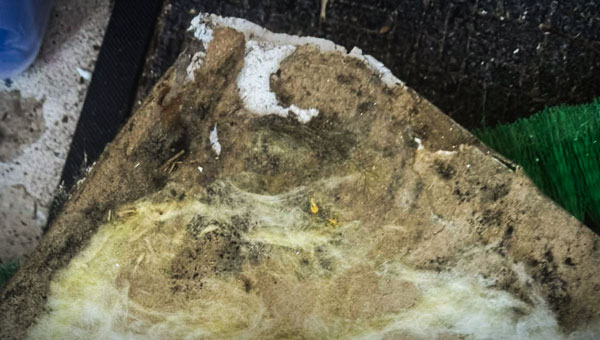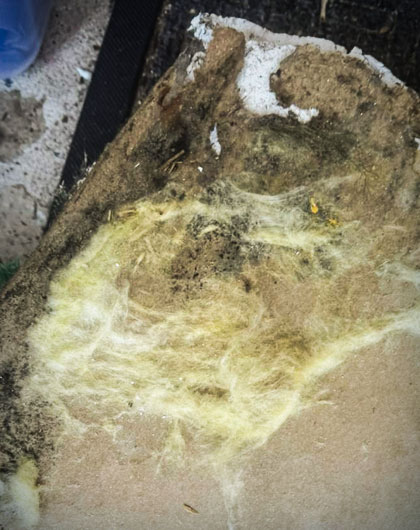
Understanding the difference between toxic and non-toxic mold is crucial for maintaining a safe environment. The stakes are high - ignoring toxic mold can lead to respiratory problems, allergic reactions, and even long-term health complications. The good news? Professional solutions exist to identify and eliminate mold effectively. If you're wondering, how do you know if mold is toxic or not - you're in the right place.
While some mold varieties are non-toxic and primarily cause aesthetic problems, toxic mold is a different story. Toxic molds, such as Stachybotrys (commonly known as black mold), produce mycotoxins - dangerous substances that can trigger serious health conditions. Individuals with respiratory issues, weakened immune systems, or allergies are especially vulnerable.
The challenge? Telling toxic and non-toxic mold apart isn't always straightforward. Visual cues can be misleading, and DIY solutions often fall short. That's why professional mold assessments are critical. Our experts at FDP Mold Remediation use specialized equipment to detect mold, determine its type, and recommend appropriate remediation strategies.

Mold isn't always easy to spot, but toxic varieties often exhibit distinct characteristics. Toxic mold tends to appear in shades of black, dark green, or gray, sometimes with a slimy or powdery texture. Unlike harmless surface mold, toxic mold often penetrates deep into porous materials like drywall and wood, making it harder to remove without professional intervention.
Common places to find toxic mold include damp areas such as basements, attics, bathrooms, and kitchens. It frequently thrives in hidden spaces - behind wallpaper, under flooring, and inside HVAC systems. If you see suspicious discoloration spreading across walls or ceilings, it's time to take action.
However, appearances can be deceiving. Some non-toxic molds mimic the look of toxic strains, which is why professional assessment remains the most reliable way to confirm toxicity.
Mold doesn't just make itself visible; it makes its presence known through smell. A persistent musty, damp odor is often the first sign of mold growth. Toxic molds, in particular, can emit strong, unpleasant smells resembling rotting wood, dirty socks, or wet cardboard.
If a moldy smell lingers despite cleaning, it's a red flag. Mold can hide within walls and ventilation systems, where it continues to release spores undetected. Relying on scent alone, though, isn't enough. Professional mold inspections use advanced detection methods to locate and identify hidden mold accurately.
Detecting mold is one thing; determining whether it's toxic is another. Certified mold inspectors follow a systematic approach to assess mold infestations and gauge the risks involved.
Visible mold, combined with symptoms like persistent coughing, headaches, or fatigue, often signals the need for immediate action. Professionals collect air and surface samples, which are then analyzed in specialized laboratories to identify mold species and detect harmful mycotoxins.
The benefits of professional assessment go beyond identification. Inspectors also evaluate underlying moisture issues and provide tailored solutions to prevent recurring mold growth. This comprehensive approach ensures your home or workplace stays mold-free in the long term.
Exposure to toxic mold is more than just an inconvenience - it can have serious and lasting effects on your health. Mold spores, particularly those from toxic varieties such as Stachybotrys and Aspergillus, don't just linger in the air; they infiltrate your respiratory system, settle on surfaces, and contribute to a range of health complications. The longer exposure persists, the more severe the symptoms can become.
Ignoring toxic mold isn't just a risk to your property - it's a risk to your well-being. If you're experiencing any of these symptoms, it's essential to take action promptly. Professional mold inspections can identify the source of the problem and provide effective solutions to protect your health.
Stachybotrys chartarum, commonly known as black mold, is one of the most infamous toxic molds. It thrives in areas with prolonged moisture exposure, such as water-damaged drywall or insulation. Exposure can lead to respiratory distress, skin irritation, and neurological symptoms.
Aspergillus mold is found in many homes, often lurking in HVAC systems and damp walls. While some strains are harmless, certain types produce mycotoxins that can cause lung infections and allergic reactions.
Cladosporium prefers cooler environments and is commonly found on textiles, wood, and window frames. Although not as toxic as black mold, it can still trigger respiratory problems and exacerbate existing conditions like asthma.
Known for its blue or greenish appearance, Penicillium spreads rapidly across damp materials such as carpets, upholstery, and insulation. Some strains can produce harmful toxins linked to respiratory infections and allergic reactions.
Fusarium mold thrives in colder environments and is often found in humidifiers, wallpaper, and even food products. Prolonged exposure can lead to skin infections, eye irritation, and serious systemic health issues.
The risks associated with mold contamination aren't worth taking lightly. While some molds may seem harmless, they can still compromise indoor air quality and cause property damage over time. On the other hand, toxic molds pose immediate and long-term health threats.
Professional mold assessments take the guesswork out of the equation. Our certified experts use precise testing methods to differentiate between mold types and recommend effective remediation strategies. Attempting to handle mold without professional assistance can lead to incomplete removal, allowing mold to return stronger than before.
Timely intervention can prevent costly repairs and protect your health. Whether it's toxic or non-toxic, mold should always be addressed promptly and effectively.
Professional mold remediation follows a strategic, step-by-step process to ensure complete eradication. It starts with a detailed inspection, assessing moisture levels, and identifying the extent of contamination.
Once the mold type is determined, containment measures are implemented to prevent further spread. Affected materials, such as drywall or flooring, may need removal to eliminate mold at the source. Specialized air filtration systems capture airborne spores, ensuring a thorough clean-up.
The final step? Prevention. Professionals provide long-term solutions such as improving ventilation, repairing leaks, and applying mold-resistant treatments to keep mold from returning.
Mold can be deceptive, lurking unnoticed until it becomes a serious problem. Distinguishing between toxic and non-toxic mold is not just about aesthetics - it's about health and safety. Ignoring mold issues can lead to severe health complications and costly structural damage.
Professional mold inspection and remediation services offer peace of mind, ensuring your home remains a safe environment. If you suspect mold growth, don't wait for the problem to escalate. Contact FDP Mold Remediation today for a comprehensive assessment and expert solutions tailored to your specific needs.
Your health and home deserve the best protection - trust our professionals to handle mold the right way.



